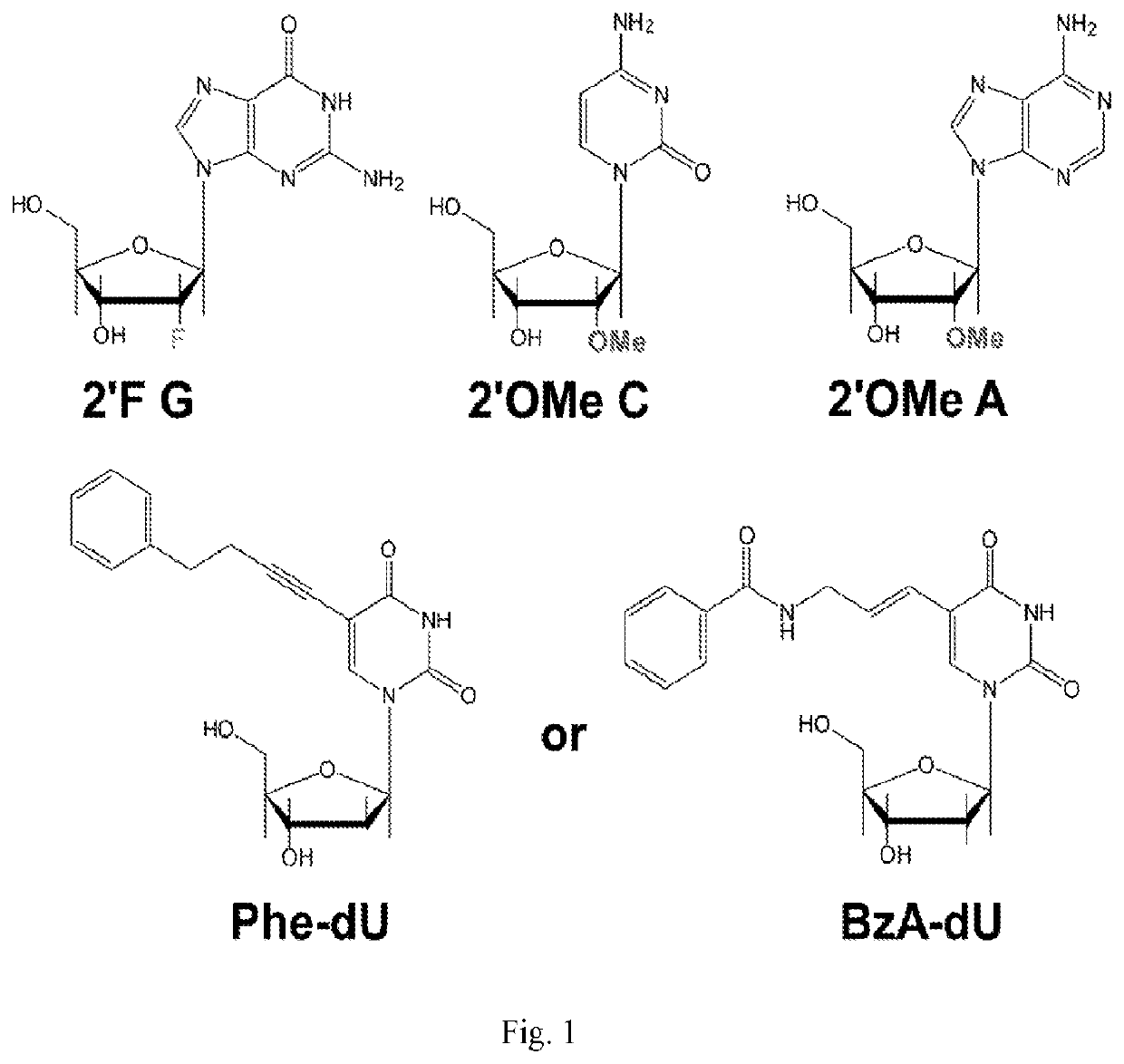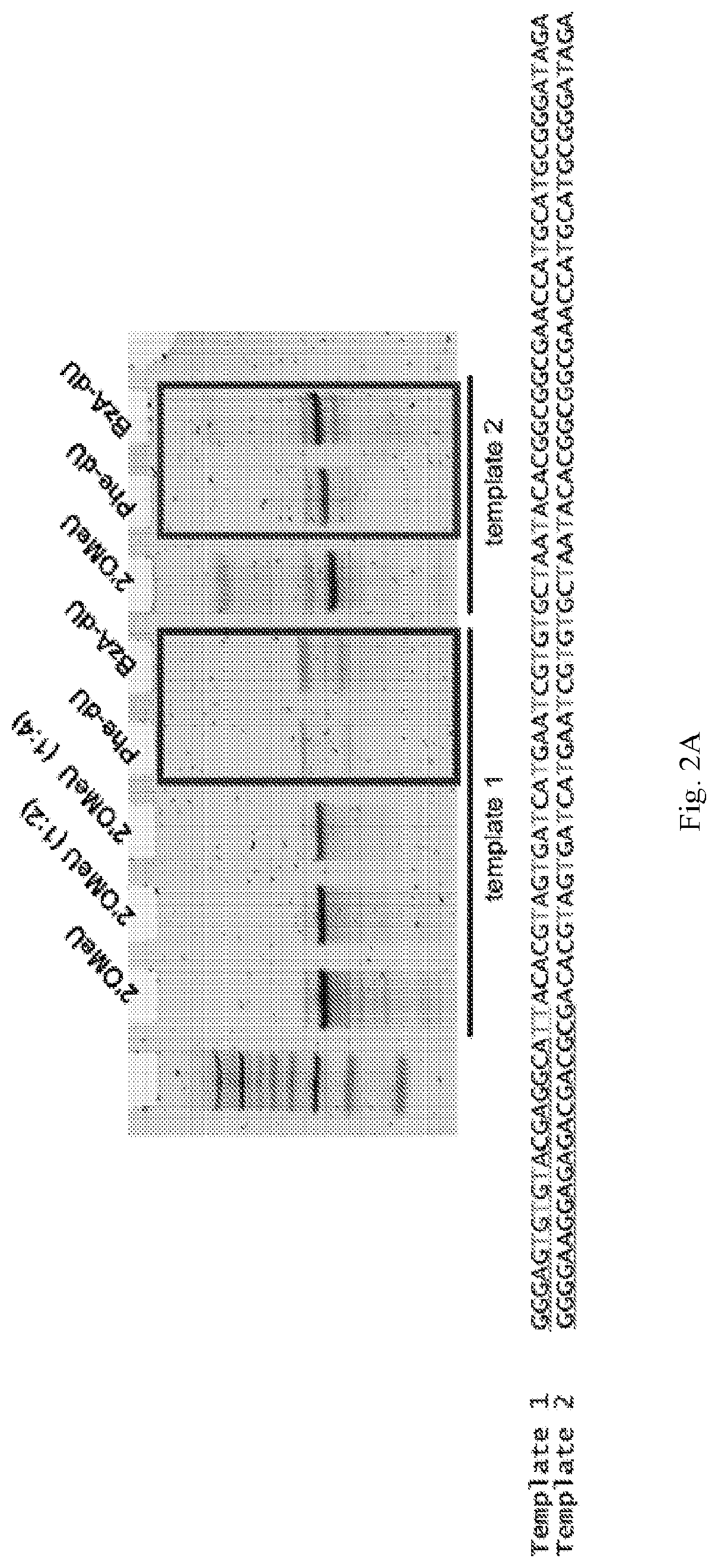Chemically modified RNA aptamers and uses thereof
a technology of rna aptamers and aptamers, which is applied in the field of chemically modified rna aptamers, can solve the problems of lack of nucleic acid chemical diversity
- Summary
- Abstract
- Description
- Claims
- Application Information
AI Technical Summary
Problems solved by technology
Method used
Image
Examples
example 1
[0061]Using a N40 library containing ˜10″ unique sequences, transcribed using a mixture of Phe-dUTP, 2′OMe ATP, 2′OMe CTP and 2′F GTP, SELEX was initiated against the protein LRIG1. In short, the His-tagged protein was immobilized on 1 μm, magnetic His-capture beads and incubated with the library for 30 minutes at 37° C. after which the beads were washed 3 times with buffer, and then any bound library molecules eluted by the addition of wash buffer containing the denaturant guanidine hydrochloride (4M). Following elution the library molecules were recovered by ethanol precipitation and reverse transcribed into DNA using SSIV under optimized conditions (2M betaine). The resulting ssDNA was then amplified by PCR and the resulting dsDNA then transcribed back in to modified RNA by transcription using the LAL-polymerase and a mixture of Phe-dUTP, 2′OMe ATP, 2′OMe CTP and 2′F GTP under the present optimized conditions. The process was repeated for 8 rounds of selection. A fluorescently la...
example 2
[0063]Using a N40 library containing ˜1014 unique sequences, transcribed using a mixture of Phe-dUTP, 2′OMe ATP, 2′OMe CTP and 2′F GTP, SELEX was initiated against Programmed cell death protein 1 (PD1). The initial 5 rounds of the selection were carried out in the same way as described above. For rounds 6 and 7, the negative selection step was carried out on NIH-3t3 cells which do not express PD1, followed by a positive selection on the target protein immobilized on Ni-NTA beads. In round 8, the positive selection was carried out on engineered NIH-3T3 cells overexpressing PD1, following a negative selection on wild type NIH-3T3 cells which do not express PD1. This was done to ensure the enrichment of aptamers which binds to PD1 on cell surface. For rounds 6, 7 and 8, in the positive selection stage, 0.1 mM Dextran Sulphate (18 kd) was also added to the PD1-Ni-NTA beads / PD1 expressing cells to enhance the stringency. For the cell selection step in round 8, following negative selectio...
PUM
| Property | Measurement | Unit |
|---|---|---|
| molecular weight | aaaaa | aaaaa |
| solubility | aaaaa | aaaaa |
| volume | aaaaa | aaaaa |
Abstract
Description
Claims
Application Information
 Login to View More
Login to View More - R&D
- Intellectual Property
- Life Sciences
- Materials
- Tech Scout
- Unparalleled Data Quality
- Higher Quality Content
- 60% Fewer Hallucinations
Browse by: Latest US Patents, China's latest patents, Technical Efficacy Thesaurus, Application Domain, Technology Topic, Popular Technical Reports.
© 2025 PatSnap. All rights reserved.Legal|Privacy policy|Modern Slavery Act Transparency Statement|Sitemap|About US| Contact US: help@patsnap.com



